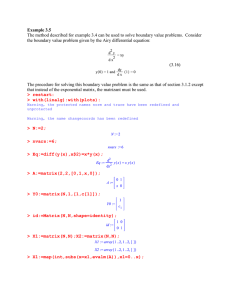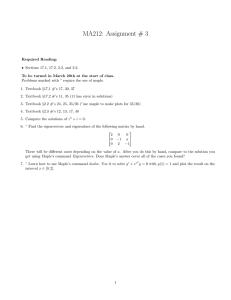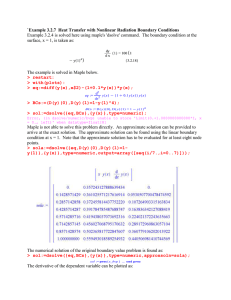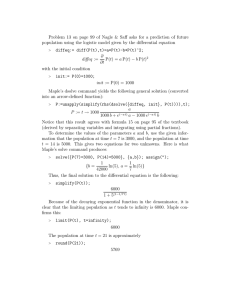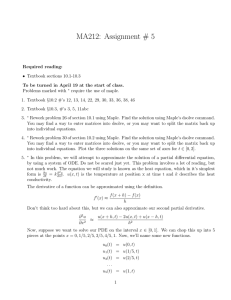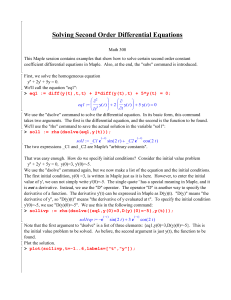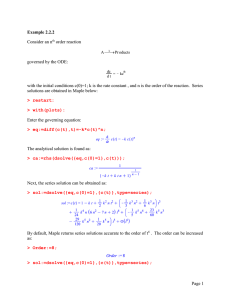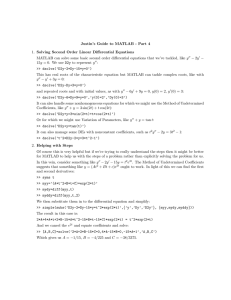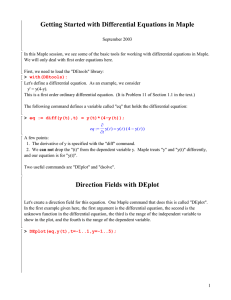Example 3.doc
advertisement
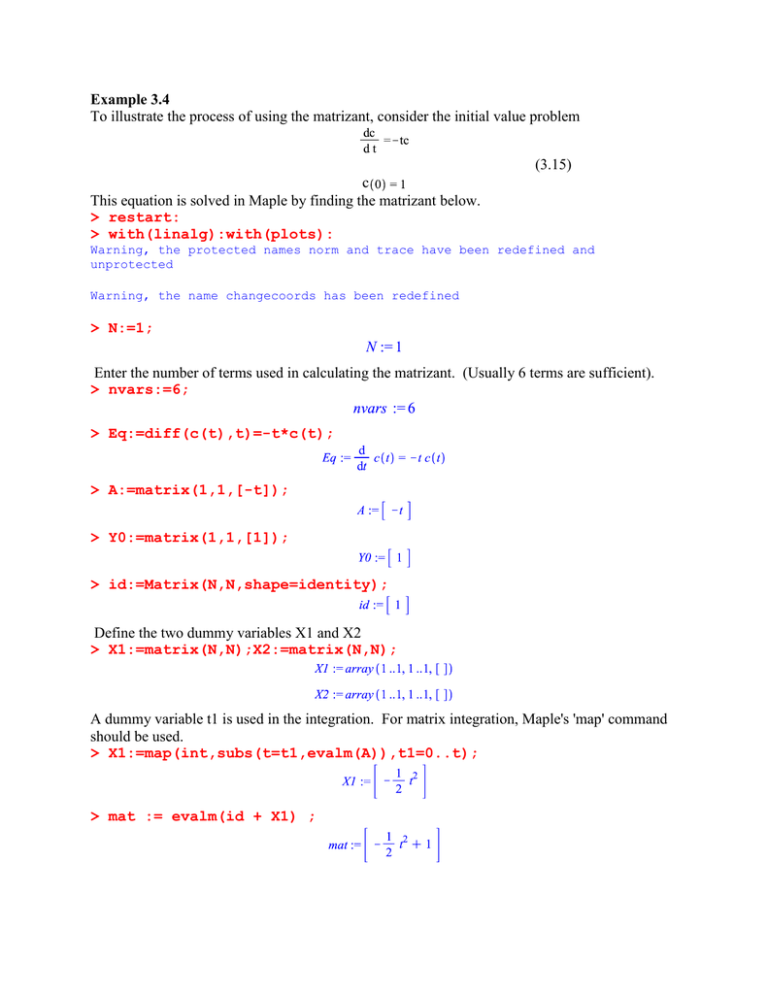
Example 3.4
To illustrate the process of using the matrizant, consider the initial value problem
(3.15)
c
This equation is solved in Maple by finding the matrizant below.
> restart:
> with(linalg):with(plots):
Warning, the protected names norm and trace have been redefined and
unprotected
Warning, the name changecoords has been redefined
> N:=1;
Enter the number of terms used in calculating the matrizant. (Usually 6 terms are sufficient).
> nvars:=6;
> Eq:=diff(c(t),t)=-t*c(t);
> A:=matrix(1,1,[-t]);
> Y0:=matrix(1,1,[1]);
> id:=Matrix(N,N,shape=identity);
Define the two dummy variables X1 and X2
> X1:=matrix(N,N);X2:=matrix(N,N);
A dummy variable t1 is used in the integration. For matrix integration, Maple's 'map' command
should be used.
> X1:=map(int,subs(t=t1,evalm(A)),t1=0..t);
> mat := evalm(id + X1) ;
We now have the first two terms of the matrizant. The next step is to find the next five terms. A
'do loop' can be written to find the matrizant:
> for i from 2 to nvars do
S:=evalm( subs(t=t1,evalm(A))&*subs(t=t1,evalm(X1)) ):X2:=
map(int,S,t1=0..t):mat := evalm(mat +X2) :
X1:=evalm(X2):od : evalm(mat) ;
> sol:=evalm(mat&*Y0);
> C:=sol[1,1];
Thus, the process yields a series solution in t for C. This solution can be compared to the series
solution given by Maple's 'dsolve' command:
> dsolve({Eq,c(0)=1},c(t),type=series);
By default, Maple gives a series solution accurate to the order of t 6 . The order of the series
solution can be increased by using Maple's order specification as:
> Order:=14;
> dsolve({Eq,c(0)=1},c(t),type=series);
We observe that the series solution obtained using the 'matrizant' method matches exactly with
the series solution given by Maple's 'dsolve' command.
